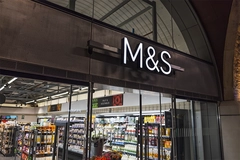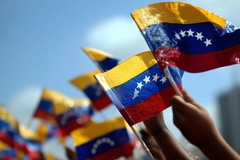
- Industry news
Industry news
- Category news
Category news
- Reports
- Key trends
- Multimedia
- Journal
- Events
- Suppliers
- Home
- Industry news
Industry news
- Category news
Category news
- Reports
- Key trends
- Multimedia
- Events
- Suppliers
SABMiller Delivers an Excellent Financial Performance

SABMiller's financial performance for the year was very strong, benefiting from sustained focus on strategic priorities right across the business.

5/20/2011 --- SABMiller plc, one of the world's leading brewers with operations and distribution agreements across six continents, reports its preliminary (unaudited) results for the twelve months to 31 March 2011.
The group delivered very strong financial results. Trading conditions across the group were mixed with improvements in most of our emerging markets, although constraints on consumer demand impacted performance in Europe and North America. Total beverage volumes of 270 million hl were 3% ahead of the prior year on an organic basis, with lager volumes up 2%, soft drinks volumes up 3% and other alcoholic beverages up 22%. Volume growth was also accompanied by share gains in a number of markets. Group revenue grew by 7% (5% on an organic, constant currency basis), driven by the higher volumes, selective price increases in the current and prior year, as well as favourable brand mix, all reflecting the strength of our brands.
Meyer Kahn, Chairman of SABMiller, said: "SABMiller's financial performance for the year was very strong, benefiting from our sustained focus on our strategic priorities right across the business. Brand equities and sales execution drove profitable volume growth, and while we maintained focus on cost management, we continued to increase investment behind our local and international brand portfolios.”
EBITA grew by 15% on a reported basis (12% on an organic, constant currency basis) driven by EBITA growth from all divisions and assisted by the strength of key operating currencies against the US dollar compared to the prior year. EBITA margin was 120 bps higher, benefiting from both the growth in revenue and a marginal reduction in raw material costs (on a constant currency, per hl basis), although both brewing and soft drinks raw material costs saw moderate increases in the second half of the year. We continued to invest in order to support and further develop our brands as trading conditions improved in a number of key markets during the year. In real terms fixed costs (on a constant currency basis, per hl basis) were level with the prior year, with increased expenditure behind sales and in support of expansion in Africa being offset by cost productivity.
Adjusted earnings were 20% higher as a result of the increase in EBITA and lower finance costs, with an effective tax rate of 28.2%. Adjusted earnings per share were up 19% to 191.5 US cents.
The group generated US$2,488 million of free cash flow, an increase over the prior year of US$460 million. Cash inflows from working capital of US$66 million continued the positive trend of the previous year, albeit at a lower rate. Capital expenditure was US$1,315 million, US$213 million lower than the prior year, following the completion of a number of key capacity expansion projects. Cash flows from associates and joint ventures were favourable primarily due to higher profits in the MillerCoors joint venture and lower funding requirements than in the prior year.
Net debt decreased by US$1,307 million to US$7,091 million, primarily as a result of the robust cash inflows. The group's gearing ratio fell to 31.2% from 40.8% in the prior year. The Board has recommended a final dividend of 61.5 US cents per share which will be paid to shareholders on 12 August 2011. This brings the total dividend for the year to 81 US cents, an increase of 13 US cents (19%) over the prior year.
* Latin America delivered EBITA growth of 17% (11% on an organic, constant currency basis) despite lager volumes being level with the prior year on an organic basis. EBITA growth resulted from selective price increases, mainly in the second half of the prior year, lower raw material costs and an ongoing focus on the reduction of fixed costs. We continued to increase the appeal of the beer category, focusing on new consumer segments and consumption occasions and further developing our brand portfolios, while also improving our routes to market and sales reach. In Colombia full year lager volumes declined by 6% as a result of increased consumer prices in response to the emergency VAT increase levied specifically on the beer category in February 2010 as well as exceptional widespread flooding. Peru's full year lager volume growth of 10% was boosted by the country's continued strong economic recovery and our ongoing brand development initiatives.
* In Europe, EBITA increased by 2% (4% on a constant currency basis), despite lager volumes falling by 3% for the year amid difficult economic and industry conditions, including competitor discounting. The first half of the year was particularly challenging as a result of significant excise increases in Russia and the Czech Republic as well as extensive flooding and the mourning period following the death of the president in Poland. The second half of the year saw improving volume trends across most markets, albeit compared to a relatively weak prior year base. While lower volumes and downtrading impacted profitability, lower raw material costs and cost efficiencies more than offset this, driving the increase in EBITA.
* In North America, EBITA grew by 20% for the year, with MillerCoors' EBITA up 20%. MillerCoors' sales to wholesalers (STWs) and sales to retailers (STRs) were down 3% as the US beer market remained challenging, with high unemployment among key beer consumer groups. However, trends improved through the year in the key premium light segment, and the Tenth and Blake crafts and imports division continued its double digit volume growth. EBITA benefited from revenue growth due to price increases and favourable sales mix, complemented by the ongoing realisation of synergies and other cost savings. During the year, incremental synergies and cost savings of US$275 million were achieved, generating total annualised synergies and cost savings of US$684 million. MillerCoors remains on track to deliver US$750 million in total annualised synergies and other cost savings by the end of the calendar year 2012.
* Africa lager volumes grew by 13% on an organic basis, and by 9% excluding Zimbabwe1. Uganda, Zambia, Mozambique and Angola all delivered robust lager volume growth as a result of capacity expansion, improved routes to market, brand development initiatives and good economic growth. Tanzania also saw good lager volume growth despite the prior year including other licensed brands which have now been withdrawn. Soft drinks volumes grew by 8% on an organic basis (4% excluding Zimbabwe). EBITA grew by 15% (20% on an organic, constant currency basis). Growth came from higher volumes and price increases, partially offset by the impact on commodity costs of weaker local currencies relative to the US dollar, as well as increased sales and marketing investment and increased fixed costs from recent capacity expansions.
* In Asia, lager volumes grew 10% on an organic basis, driven mainly by volume growth in China (also up 10%), with EBITA up 31% (33% on an organic, constant currency basis). In China, our associate CR Snow continued to expand ahead of the market and gain share, with marketing investment increasing and premium variants of the Snow brand seeing good growth. Lager volumes in India also grew by 10% despite continuing regulatory constraints in Andhra Pradesh.
* In South Africa, lager volumes grew by 2% despite the absence of a peak Easter trading period in the financial year, also assisted by a cautious improvement in consumer confidence and improved volumes around the time of the 2010 FIFA World Cup. Our increased brand and market facing investment continued to strengthen our core brand portfolio and helped to stabilise our market share in the second half of the year. Soft drinks volumes grew by 3% reflecting the early success of the soft drinks' growth strategy. EBITA grew by 21% (11% on a constant currency basis) assisted by the strengthening of the rand during the year. Revenue increased due to volume growth and price benefits, with raw material input costs slightly favourable as lower brewing costs were largely offset by an increase in soft drinks raw material costs. Marketing and fixed costs both increased primarily due to investments in sales force and marketing capability.
* Progress continues across all aspects of the business capability programme. Net operating benefits in the year exceeded US$60 million, somewhat ahead of expectations, with the strongest contributions from our global procurement programme and the implementation of a regional manufacturing organisation in Europe. Working capital benefits realised since the start of the programme continued to exceed our original objective of US$350 million by the end of 2012 and by the end of the year were over US$450 million on an accumulated basis. Working capital has been helped by the implementation of customer management systems, supply chain programmes and improved management of payables. Costs were broadly in line with the expectations communicated at mid year, with exceptional charges of US$296 million taken in the year. These primarily relate to the design, build and implementation of major systems platforms. The major milestones during the year have been the implementation of sales and distribution systems in Peru and Colombia and a new back office platform in South Africa.










